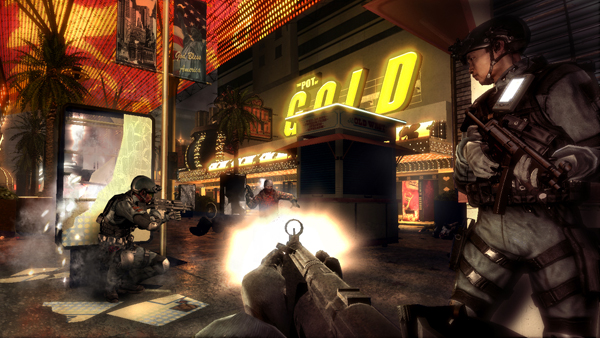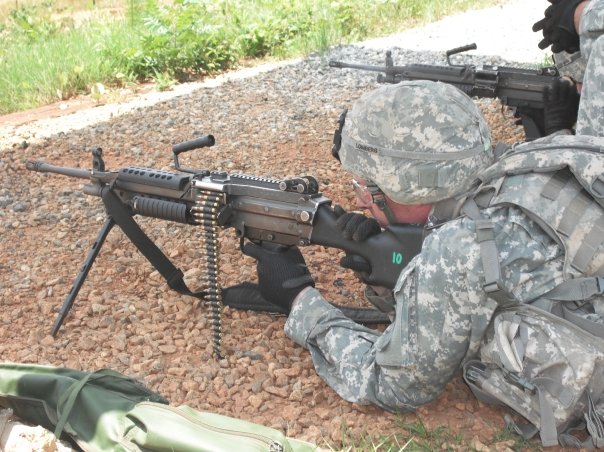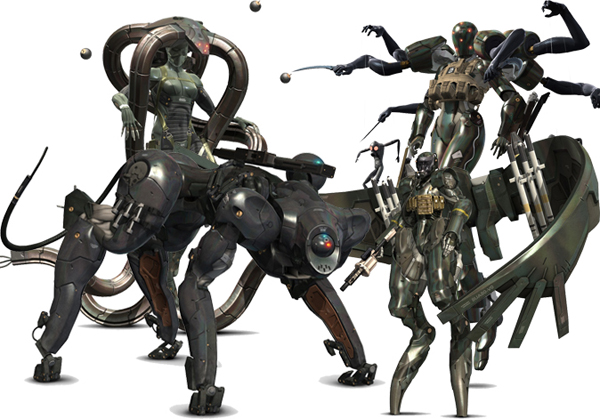It turns out that real soldiers don’t regenerate and machine guns don’t have unlimited ammo. Who knew?
It’s no secret that first-person shooters — in all their Hollywood-inspired clamor and spectacle — don’t simulate the realities of war very well. From basic rules of engagement, to gun safety (such as “don’t flag your buddies”), and the dynamics of combat, first-person shooters are more akin to interactive action flicks than a proper re-creation of armed conflict.
Of course, no one wants to play a hyper-realistic military simulator, as this hilarious Onion sketch illustrates.
No one wants to fill out endless paperwork, take mandatory sexual harassment training, write NCOERs (noncommissioned officer evaluation reports), sit through Powerpoint presentations with the potency of 10 Valiums, or stand 12-hour watches. No one wants to experience “hurry up and wait.”
Because that would be boring. Too realistic.
People want an escape from the mundane. But surely we can find a happy medium between silly action flicks and boring reality.
With the recent release of what will probably be the best-selling video game of the year, Call of Duty Black Ops II (for Xbox 360, PlayStation 3, Wii U, and PC), I thought it instructive to get the low-down from a real soldier, a veteran who deployed in support of the Global War on Terror. Sergeant Dave Mull deployed to Iraq in support of the Global War on Terror three separate times: ’04-’05, early ’07-late ’07, and ’08. His Military Occupational Specialty (MOS) is Cavalry Scount (19D), which essentially means that his job is enemy, area, and route reconnaissance. Altogether, he served 12 years.
Our conversation yielded some fascinating insights, and some of it may surprise you.
Mull: I’ve always looked at FPS as a form of therapy post-deployment. My first tour was still in the sixth generation of consoles, so when I could play, I was actually busy with tactical role-playing games like Square’s Front Mission 4. But by my second tour, guys were getting Xbox 360s shipped over, so in downtime, we were playing Halo 2 and Tom Clancy’s Rainbow Six: Vegas.It’s like a cartoon version of reality — it lets you work out aggression and build hand-eye coordination at the same time.
Mull: A lot of times it’s simple things like nomenclature, the positioning of equipment, or a feature on the rifle. I remember Counterstrike used to have the M4 eject on the wrong side so there would be more interesting things occurring on the screen when you fired. Also, you have the realism aspects: There’s almost never any calculation for bullet drop or ambient wind, and dropped weapons and magazines are magically full when the player walks over them to pick them up.I happened to notice in the opening [of Call of Duty Black Ops 2], Frank Woods rambling about a C-130, but the plane that was shown had a high tail and a body more like a C-17 Globemaster … just with turboprops.
GamesBeat: And heavy automatic weapons rarely overheat — and have infinite ammo, of course.
Dave Mull: Definitely. The Army defines a hot barrel as 200 rounds fired within two minutes. Very few games use this mechanic. The recent Killzones are the only ones that really spring to mind, but they had unlimited ammo, with the only limiting factor being heat buildup.
GamesBeat: What inaccuracies seem the most jarring? Is there anything that would prevent you from playing such a game?
Dave Mull: Hmm … they seem to be trying far too hard to make everything “epic” in campaign mode. It can sometimes be a chore trying to figure out which enemies actually count and which ones are the infinitely respawning cannon-fodder bots.
It won’t stop me from playing it, but you’d think they could remember that sometimes nothing happening can be just as, if not much more, suspenseful.
GamesBeat: It does seem like the goal of many shooters — Call of Duty especially — is bigger setpieces, bigger explosions, and bigger bodycounts. Which naturally makes them more like a Michael Bay movie than anything resembling reality.
Dave Mull: Remember in the Metal Gear Solid games, it’s intended that you don’t kill anyone. Of course, you can, but it’s not the way [series creator Hideo] Kojima envisioned it.
GamesBeat: Indeed. And a reader on Bitmob, GamesBeat’s sister site, pointed out that MGS4 is one of the few games to deal with post-traumatic stress disorder. In many ways, it’s a more realistic depiction of war than any first-person shooter.




